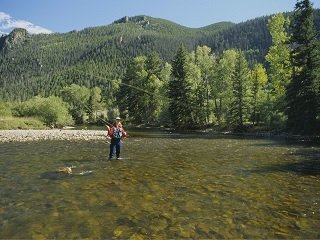 Throughout the years I’ve spoken with several anglers who have been interested in picking up fly fishing. Now there’s nothing wrong with this, of course, but most of these individuals want some tips or advice on how to “get good” at fly fishing. In short: they want a shortcut. The truth is, there isn’t really a fast track to improving your fly fishing skills or boosting your odds on the water, but you can put in some time and dedication to steadily increase your abilities. Keep reading to learn how.
Throughout the years I’ve spoken with several anglers who have been interested in picking up fly fishing. Now there’s nothing wrong with this, of course, but most of these individuals want some tips or advice on how to “get good” at fly fishing. In short: they want a shortcut. The truth is, there isn’t really a fast track to improving your fly fishing skills or boosting your odds on the water, but you can put in some time and dedication to steadily increase your abilities. Keep reading to learn how.
Practice Casting
As the old adage goes, “Practice makes perfect.” We’ve heard it a hundred times, but that’s because it’s true, especially in fly fishing. If you want to make the perfect cast and hit the right spots each time, you have to practice. One thing I always asked when customers wanted to become better fly anglers was how often they practiced off the water. And the anglers that need the most work were typically the ones who responded, “Never.” in order to develop good casting technique, it is critical that you practice on a regular basis throughout the year. This will lead to a proficiency in casting that can make all the difference between success and frustration. Set up a few paper, or even a hula hoop as a larger target, in the yard or an open field and work on your ability to land a fly into the target. At first it may be very difficult, but in time you will be nailing small targets most of the time.
Practice Knot Tying
One of the biggest causes of failures on the river is faulty knot tying. What’s really bad about this is that you have control over it. While you may not be able to control a fish going into heavy cover and breaking your line, you can absolutely make sure that you do not make a cast with a poor knot. When tying a knot, the line will immediately lose strength because very few knots will ever be at 100% of the rated strength for a line. However, there are several actions an angler can take when tying on a fly to increase the likely hood that the knot will hold true. These include moistening the knot before pulling the line tight, tightening the knot slowly and smoothly, watching for frays or abrasions in the line itself, and testing the knot with a strong tug after tying it.
The tips discussed above are just two ways you can practice different facets of your fly fishing skills and see them improve steadily. Be sure to come back for more hints on how to boost your odds on the river this season.








